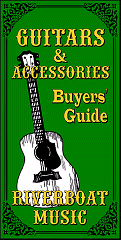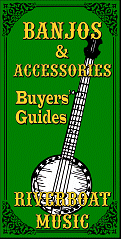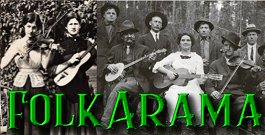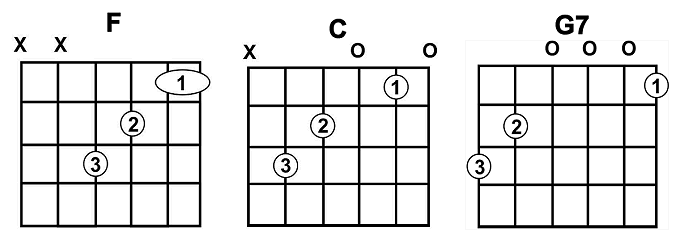
Play in the Key of C Like a Pro!
| Please Read: How to Help Our Site at No Cost to You - Some of our articles contain recommendations for products we like and vendors we personally trust. Some of those vendors may pay us a very small commission if you click on a link and buy their products. This costs you nothing at all and helps offset the costs of what we do. So if we point you to something you decide to buy later, please make certain you come back through our site and click on the link directly. Thanks. |
| This Site is a Cookie-Free Zone - Except for discussion forums that you have to expressly register for, none of our pages use cookies of any kind. Some of the vendors we link to do, but that won't affect you unless you click on a link to their pages. Your continued use of this page indicates that you agree to our policy. For details, click here. |



|


F Major - Set your C Chord Free!
This is part of the "VERY Basic Guitar subset of our "How To Folk" articles. In an effort to "jump start" your enjoyment of Folk music and your ability to join in, no matter what instrument you play, we are providing some very basic notes about guitar chords.

 Note: - This part of the Folkarama page, which is dedicated to helping beginners "get into" Folk music and join Folk communities as easily as possible, with simple articles and links to resources that provide hands-on instruction in traditional acoustic instruments.
Note: - This part of the Folkarama page, which is dedicated to helping beginners "get into" Folk music and join Folk communities as easily as possible, with simple articles and links to resources that provide hands-on instruction in traditional acoustic instruments.
Folkarama, in turn, contains many references to more extensive articles and resources in Paul Race's CreekDontRise.com site, as well as other related pages.
Previously on "Basic Guitar"
Hopefully, you have already worked your way through these materials:- Meet Your Guitar - a very basic intro to holding, tuning, and picking the guitar.
- Three Magic Chords - a three-part series to introduce enough easy guitar chords to get you started on learning scores of 2-chord songs.
And you may or may not have worked through these:
- C and C9 Chords - Once you've learned the "Three Magic Chords," the C chord will help you play thousands of 3-chord songs in G, but some folks find it cumbersome at first, so we've given you a "workaround" to use while you're getting used to it.
F Major and its Friends
For guitar players, F is best known as a chord you need to play in C. Unlike all the chords we've shown so far, it's not an "open chord." That means there are no "open strings" (shown as zeroes in the chord pictures). So far we've only presented the C chord mostly as a way to play three-chorders in the key of G (and we gave you a cheat for that). Similarly, for beginning guitarists, the main reason to learn the F chord is because it allows you to play three-chorders in the key of C, an important Folk and Country key.
So far we've only presented the C chord mostly as a way to play three-chorders in the key of G (and we gave you a cheat for that). Similarly, for beginning guitarists, the main reason to learn the F chord is because it allows you to play three-chorders in the key of C, an important Folk and Country key.
I almost called this article "The Other Chord You Love to Hate," because many beginning guitarists use F chords only under duress. That said, if you've gotten used to using a real C chord by now, going between C and the version of F we're showing at the right is pretty easy.
This is a "semi-barre" fingering. A "barre" chord is one on which you fret multiple strings by laying a finger - usually your first finger - across them.
In this case, you're only "barring" the first two strings. You lay your first finger across the first and second string at the first fret, making certain you are holding them down hard enough to get a clear sound, then you put your second and third finger as shown.
One huge advantage of this fingering is that you can go from a regular C to F simply by laying your first finger down across the first string, and moving your second and ring finger over one string.
This version of the F chord makes it easy to play many Carter Family classics, which were often pitched in C because Sarah Carter's original autoharp (a model 72 7/8) could only play 3-chorders in F and C. To this day, most people play "Wildwood Flower" in C, using these chord positions.
To make things even easier, the most common fingering of G7 uses a related hand position. The three related chords are show in the following figure.

Practicing in C - Depending on your vocal range, many "three-chorders" in D can be played in C.
For practice, you can go to the Three-Chord Songs in D page Then, instead of using D, B7, and G, you use C, G7, and F.
I'm also told that the following songs work very well in C and may originally have been played in those keys. Mostly they use C, F, G, and Am, chords you have been shown by now.
- Leonard Cohen's "Alleluiah"
- Paul McCartney's "Let it Be"
- Cyndi Lauper's "Time After Time"
- Bob Dylan's "Blowin' in the Wind"
More Related Chords - Now it's confession time. There is even a better way to play the F chord for certain kinds of songs. It's a full "barre" chord which we'll show you in the Barre Chord article.

Even stranger, a worse way is shown in many fingering charts. That's the setup to the right. Some folks prefer it when they're playing in C. Your choice.
Three other chords are worth mentioning at this time:
- D minor, the relative minor of F.
- B flat major, which you would need to play "three-chorders" in F.
- C7, the other chord you'll find useful when playing "three-chorders" in F. It's also used when playing Blues in G.
D minor (lower left) is not only F's relative minor. In some Folk and Bluegrass subgenres, D minor is a popular key in its own right.
The B flat fingering shown below is actually a "cheater" or compromise version that you can use if you need to play a song in F, but you aren't used to barre chords yet.
 |
 |
 |
About Capos in F and C - By now you have noticed other guitar players using devices called "capos" to raise the pitch of their strings. Often it's because a song they enjoy playing in a particular key on guitar is too low for their vocal range.
If you're playing solo, this is most useful when you only capo up two or three frets, because it keeps most of the lower range of your guitar.
I often capo up three frets when I need to play a song in F, because D gives me lots of open chords and voicings that I can't get when playing in F. So if I have to play a song in F, I'll put a capo on the third fret and play it with D, A7, G, etc.
That said, I see a lot of otherwise capable guitarists playing in C by capoing up five frets and playing in G. If you have a bass player and don't need the lower notes of your guitar, fine. But as a soloist, if I need to play a song in C I'll play it in C.
Conclusion
The next step will be showing you "barre" chords, which allow you to play major, minor, seventh, and minor seventh chords in any key. Electric guitar players use them more than they use open chords, because they don't need the open strings to keep chord changes sounding smooth.
Acoustic players tend to use barre chords mostly when they need a chord like Bb or C#m that sounds better as a barre chord. Or when they're playing rock-and-roll and need things to sound a little choppy anyway. But either way, they are the "next step" in your understanding of guitar. And once you know how they work, you can still glance at the guitar player's left hand and figure out which chord he's playing by which fret his index finger is stretch across.
Keep practicing what we've shown you so far, and never stop learning. Once again, when you know your own instrument, whatever it is, being able to recognize these chord patterns in a song and recognize the chords other folks are playing on guitar, you should be able to jump in and add something worthwhile without coaching or hints on 90% of the songs out there.
Other Resources
Related resources include:- Meet Your Guitar - A brief introduction to the parts of the guitar and how to hold it.
- Three Magic Chords - A series of articles that get you started on basic chords you can use to play thousands of songs. Articles include:
- 3-Chord Songs in D - A list of songs you can easily play in D, using G and A7.
- What is a "Three-Chorder"? - The three-chord pattern that defines countless songs.
- More Useful Chords - "Next steps" to expand your range and enable you to play even more songs, including:
- C and C9 Chords - Once you've learned the "Three Magic Chords," the C chord will help you play thousands of 3-chord songs in G, but some folks find it cumbersome at first, so we've given you a "workaround" to use while you're getting used to it.
- It's All Relative - Am and Em - The fingerings and most common uses of guitar's easiest minor chords, Am and Em. We also sneak in Am7, Em7, and Bm7 to expand your chord vocabulary.
- A Major - the Fiddler's Friend - Expand your chord arsenal with A major and its BFF, E7.
- Barre Chords - The Swiss Army Knife of Guitar - You may not need them much, but you should know how they work at least.
Other resources will be listed as I get to them.
- 3-Chord Songs in G - A list of songs you can easily play in G using G, C9 (or C) and D7.
- The Circle of Fifths - a deeper discussion of the relationships among chords, something that helps musicians quickly learn or follow new songs, or even transpose them to other keys. (This is on our sister site, CreekDontRise.com)
Sister Sites
 Other sites we started to keep this site from getting too big to be useful include:
Other sites we started to keep this site from getting too big to be useful include:
- CreekDontRise.com is a repository of articles about Folk music and the instruments on which it has been traditionally played.
The "Acoustic" page includes a long list of articles including maintenance and playing tips on all sorts of traditional acoustic instruments.
 RiverboatMusic.com is a buyers' guide for acoustic and traditional instrument from a musician's point of view, focusing on the uses, reliability, and practicality of various instruments, and not just the marketing hype about the shape of the fret markers or whatever.
RiverboatMusic.com is a buyers' guide for acoustic and traditional instrument from a musician's point of view, focusing on the uses, reliability, and practicality of various instruments, and not just the marketing hype about the shape of the fret markers or whatever.
For instruments like dulcimers that have mostly small manufacturers or cheap imports, we try to tell you what to look for, irrespective of brand.
 Momma Don't 'Low includes a free e-mail newsletter that discusses all of those topics above and more. We plan to include other features as time permits.
Momma Don't 'Low includes a free e-mail newsletter that discusses all of those topics above and more. We plan to include other features as time permits.
Note - If you wish to sign up for our newsletter and ask a question at the same time, please click on the Momma Don't 'Low newsletter button to learn more and to get a link to our signup form.
 PaulRaceMusic.com is the "landing page" for Paul's own musical endeavors, plus many memoirs and blogs about music and the music business.
PaulRaceMusic.com is the "landing page" for Paul's own musical endeavors, plus many memoirs and blogs about music and the music business.
 ClassicTrainSongs.com describes railroad songs that every train lover should know. Or at least know about.
ClassicTrainSongs.com describes railroad songs that every train lover should know. Or at least know about.
- SchoolOfTheRock.com has articles about Christian music, Christian music careers and performance, Christian living in general, and vintage saxophones, another of Paul's interests. This site has separate newsletters, etc., by the way - there isn't a lot of overlap with the Momma Don't 'Low(tm) newsletters.
For information about other music collections and projects, check the links at the bottom of this page.
 Whatever else you get out of our pages, I hope you come away with some great ideas for "sharing the joy."
Whatever else you get out of our pages, I hope you come away with some great ideas for "sharing the joy."
And please stay in touch!
All material, illustrations, and content of this web site is copyrighted (c) 2001, 2002, 2003, 2004, 2005, 2006,
2007, 2008, 2009, 2010, 2011, 2012, 2013, 2014, 2015, 2016, 2017, 2018, 2019, 2020, 2021, 2022, 2023 by Paul D. Race. All rights reserved.
Creek Dont' RiseTM is a participant in the Amazon Services LLC Associates Program, an affiliate advertising
program designed to provide a means for sites to earn advertising fees by advertising and linking to Amazon.com.
For questions, comments, suggestions, trouble reports, etc. about this page or this site, please contact us.
| Visit related pages and affiliated sites: | |||||
| - Music - | |||||

|
 |
 |

|

|

|

|

|

|

|

|

|

|

|

|

|

|

|
| - Trains and Hobbies - | |||||
 |

|

|  |
 |

|
| - Christmas Memories and Collectibles - | |||||
 |

|
 |

|
 |

|
| - Family Activities and Crafts - | |||||
 |

|

|

|

|

|

